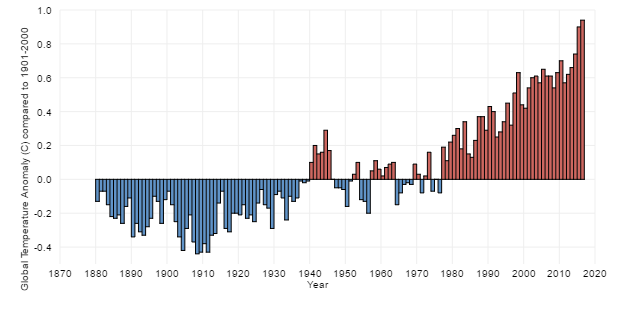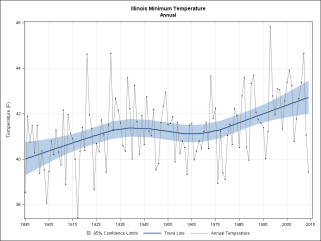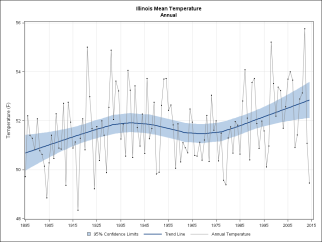Explaining Climate Change Science
Turn on any newscast or read any political blog and website, and you are bound to see commentary on climate change splashed across the screen. The topic of climate change remains an issue that causes much controversy. As an atmospheric scientist, I want to help move the needle advocating the devastating consequences climate change has on our planet.
TERMINOLOGY
First, let me explain what the terminology is concerning climate change. The terms "climate change" and "global warming" are often used interchangeably. While many people say "global warming" when talking about the rate of warming our planet is experiencing, scientists prefer "climate change" because it describes the changes to the whole system, not just temperatures.
THE GREENHOUSE EFFECT
So before unpacking this debate, let's discuss what exactly is the greenhouse effect. In our atmosphere, there are major greenhouse gases, such as carbon dioxide (CO2) and water vapor (H2O) that absorb heat, or solar radiation, and radiates it back to the Earth's surface. Other minute amounts of other gasses come into play, but we will focus on the two main gases for simplicity's sake. While this is necessary for life on our planet (without a natural greenhouse effect, the temperature of the Earth would be about 0°F instead of its present 57°F), there is great concern that human activities enhance the greenhouse effect.
HUMAN CONTRIBUTIONS TO CLIMATE CHANGE
Scientists have observed that the entire Earth is warming. This is a cold hard fact, as evidenced by the global average temperature warming. While there is some natural component to global temperatures warming (water vapor), overall human activity has contributed significantly to the increase of greenhouse gases' atmospheric concentration. The rise in the atmospheric concentrations of these greenhouse gases has led to global-scale warming. Still, have doubts that we are contributing to the problem? Most of the scientific community, including 97% of published climate scientists, has accepted that anthropocentric (human-influenced) climate change is inconclusive.

EVIDENCE OF CLIMATE CHANGE
Let's look at the proof that climate change is occurring. First, there has been a 0.8° C increase in the Earth's temperature since pre-industrial times. A global average temperature rise of 2°C or less is anticipated in the coming years. Sea levels have risen and will continue to rise throughout the world with widespread decreases in the extent of snow and ice.
WHAT DOES THIS MEAN TO YOU?
Climate change seems to occur on too large of a scale to affect you in your location. Don't bet on it. The warming of Earth's globally averaged surface temperatures has implications at home. According to NOAA's (National Oceanic Atmospheric Administration) National Climatic Data Center (NCDC), the mean temperature in Illinois has slowly risen.


.Although maximum temperatures showed a general upward trend, minimum temperatures have consistently increased. On both graphs, the gray line represents the annual temperature value. The blue line shows the overall trend in a fashion that smooths out the year-to-year variability in temperature. The light blue shaded area represents the 95% confidence interval for the trend.
CONCLUSION
Climate change is a hot button issue that is often debated in the political arena. Still, those in denial that this is a looming issue for all humans need to face the truth. We need to find ways to cease our contribution to greenhouse gases. Some ways you can start are: 1) reduce, reuse, recycle, 2) use less heat and air conditioning 3) buy energy-efficient products 4) drive less or drive smart (carpool) 5) use less hot water 6) plant a tree. Hopefully, together we can halt any further damage to Earth so future generations can enjoy what we take for granted on our beautiful planet.
